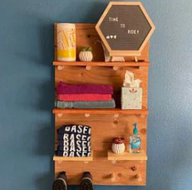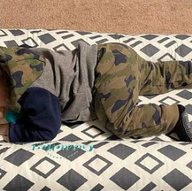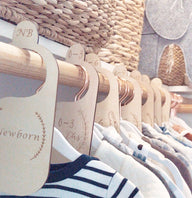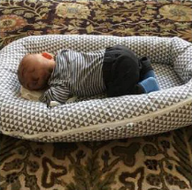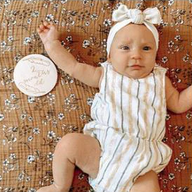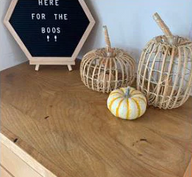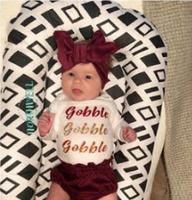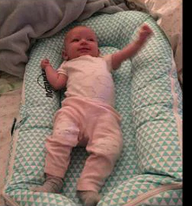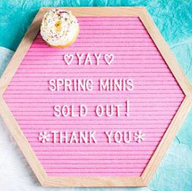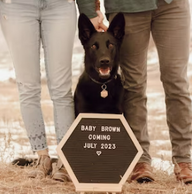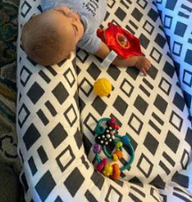FAQ

What is the Size Difference between CuddleNest Mini and CuddleNest Mighty?: Click Here For the Size Page
Does the CuddleNest contain any plastic or unsafe materials?: NO! Unlike other similar brands, our Award Winning CuddleNest is free of any plastics, ties, straps, or buckles - which are all very unsafe! Our CuddleNest is made only of safe, non-toxic materials which helps minimize risks of suffocation, choking, and other hazards. We have eliminated all hazardous materials!
Where are you based?: Our company is based in California, and we are proud to be an American Business!
Where do your products ship from?: All of our products ship from California!
Where are your products assembled?: All of our products are 100% assembled, packed, quality checked, and ship from California!
Should I use the CuddleNest if my little one is rolling over?: The American Academy of Pediatrics advises that a baby should only be placed on their back to sleep or rest until they are one year of age in order to reduce the risk of SIDS (Sudden Infant Death Syndrome) and suffocation. Pediatricians advise that once a baby is capable of rolling over from back to stomach, the baby can be allowed to remain in the sleep position baby assumes.
A healthy tot of over one year of age may be placed in the sleep position they prefer.
As always, we recommend you also check with your pediatrician about the best way to put your baby to sleep.
How do I wash my CuddleNest?: Click Here For the Care Information
Do I need to wash my CuddleNest before first use?: It is not necessary to wash it. The CuddleNest is clean and does not require washing prior to first use.
Should I purchase the CuddleNest Mighty before my little one is age appropriate?: Every baby/toddler is different, grows at different rates, and our recommended ages are just that - recommendations. With that said, Our CuddleNest Mighty is only intended for little ones 9 months of age and older. Our smaller sized CuddleNest Mini is better for younger little ones aged 0 - 8 months of age. These are approximates and recommendations.
Is the CuddleNest cover breathable?: Our CuddleNest Mini and Mighty's are tested for air-permeability. Even though our CuddleNest's pass a test for air permeability, your little one should only be placed on their back and face-up until the age of one. According to the American Academy of Pediatrics, babies placed on their tummies are at increased risk for SIDS. For this reason, anytime a baby is placed in the CuddleNest, the little one should be on the back.
How can I prevent mildew (mold) from growing on my CuddleNest: If you are concerned about "mold" on your CuddleNest, it is actually likely mildew that concerns you (mildew is what sometimes grows on damp textiles, whereas mold tends to grow on food or in other areas). Any time fabric does not dry out after getting wet (for example, from wet diapers, spit-up, sweat, or incomplete drying after washing, etc.), there is a chance mildew can develop. Here is how you can help prevent mildew from developing on your CuddleNest:
- If the CuddleNest gets wet or damp, allow it to dry completely before using or stowing away.
- Move the CuddleNest around: regularly shake it, ventilate it, and expose it to light and fresh air.
- Avoid storing the CuddleNest in humid or damp areas.
- Never add waterproof materials to, in, or beneath the CuddleNest.
If you should find mildew on the CuddleNest over time, we recommend adding a cup of white vinegar when washing the product. Alternatively, you can soak the affected piece in a solution of white vinegar and water for an hour or two before washing the piece.
Notably, there is nothing in the materials of a CuddleNest that causes mildew. However, like any fabric product, mildew can grow on a CuddleNest if it gets wet and is not fully dried. Appropriate care is necessary to keep your Nest in top shape. If you have any other questions or concerns you can contact us at hello@loluemade.com.
Can the CuddleNest be used for sleeping?: Short answer: No. The CuddleNest Mini's are not intended for sleep/sleeping. Babies fall asleep most anywhere you put them, and this may include the CuddleNest Mini. You should always supervise your baby in the Nest, whether awake or asleep. The Nest is not designed to contain a child and babies can begin to crawl or scoot unexpectedly. A baby that wakes up alone may try to find you and can fall or become entrapped between adjacent objects. For overnight sleep, or for any time that you are not able to supervise, you should move your baby to a bare product subject to a mandatory sleep standard (such as a bassinet, Moses basket, crib/cot, cradle, or play yard), on their back. Children older than one year of age and otherwise ready to sleep in a big-kid or toddler bed on their own may use a CuddleNest Mighty in their toddler or big-kid bed.
Can I carry my baby in the CuddleNest?: No. It is not safe to carry your baby in the CuddleNest. While the CuddleNest is very portable and easy to move and travel with, please remove your child before moving the CuddleNest, even for short distances.
Can I use the CuddleNest with my baby on their tummy?: The CuddleNest Mini is meant for babies 0-8 months. It should only be used while babies are on their back, as the best evidence suggests that babies should be placed on their backs until one year of age. However, once a baby is capable of rolling over from back to stomach, and from stomach to back, the infant can be allowed to remain in the sleep position he or she assumes.
The CuddleNest Mighty is meant for little ones 9-36 months. Once a child is one-year old, and also capable of rolling from their back to their stomach, and also from their stomach to their back, the child can be allowed to sleep on their side or tummy if that is their preference. However, to reduce the risk of SIDS, you should only place the baby on his/her back in the CuddleNest for every sleep until your baby reaches 1 year of age.
Nothing in the CuddleNest but your little one: For the first year, we recommend not using blankets, pillows, or other objects in the resting space of the CuddleNest.
Supervision should always be required: Stay near or at your baby's side when in the CuddleNest.
Always firm: The CuddleNest should always be on a firm, flat, and solid surface. While the CuddleNest is portable and easy to bring anywhere, be sure to always use it on solid, firm surfaces.
Transitioning toddler: When your toddler is in the midst of a crib-to-bed transition, the CuddleNest Mighty can be used in the toddler bed/big kid bed.
Always use fully assembled: Only use the CuddleNest when it is fully assembled and with no loose parts. Do not modify the CuddleNest in any way. Loose parts or a modified Nest can present a suffocation or safety hazard.
Can I use my CuddleNest in a crib, bassinet, and/or play yard?: No. The CuddleNest Mini should not be used in a crib, bassinet or play yard. The Consumer Product Safety Commission has cautioned that babies should be placed in a bare crib without any additional bedding, blankets or pillows. Furthermore, there is a concern that a young infant who can scoot or crawl out of the CuddleNest might get entrapped between the side of the crib, bassinet or play yard and the CuddleNest.
There have been incidents involving other products where babies have suffocated after becoming entrapped between a soft product and the side of a crib, bassinet or play yard. There have also been incidents where babies have suffocated on soft bedding like blankets or soft toys. This is why we warn against using a CuddleNest in a contained area like a crib, bassinet or play yard, and we also warn that blankets and pillows should not be placed in the CuddleNest. When it comes to an infant's resting environment, bare is best.
The CuddleNest Mighty can be used in a toddler bed or big kid-sized bed, once the child is at least nine months old, and then only placed at a height that allows the child to safely descend on his own.
Can I carry my baby in the CuddleNest?: No. It is not safe to carry your baby in the CuddleNest. While CuddleNest's themselves are very portable, you must remove your baby before transporting the CuddleNest, even for short distances.
Can I use the CuddleNest if my baby is rolling over?: The American Academy of Pediatrics advises that a baby should only be placed on their back to sleep or rest until they are one year of age in order to reduce the risk of SIDS (Sudden Infant Death Syndrome) and suffocation. Pediatricians advise that once a baby is capable of rolling over from back to stomach, the baby can be allowed to remain in the sleep position baby assumes. A healthy tot of over one year of age may be placed in the sleep position they prefer. As always, we recommend you also check with your pediatrician about the best way to put your baby to sleep.
Can I use individual parts of my CuddleNest separately?: No. CuddleNest's should only be used when fully assembled and zipped. Loose fabric and parts may present a suffocation hazard.
Co-Sleeping Message: The American Academy of Pediatrics has determined that the safest place for a baby to sleep during the first year of life is in a crib, bassinet or play yard in the parents' bedroom.
The LoLueMade Company recognizes that many people believe strongly that infants and young children should never sleep with adults in their bed, while others believe that such co-sleeping provides benefits. Many who choose to co-sleep with our CuddleNest find that the sides help establish a separate space for the baby that is close by to the parent(s).
If you choose to use a CuddleNest while co-sleeping, in addition to consulting with your pediatrician, be sure to follow these seven precautions:
- Place the CuddlNest on a firm mattress only. Be sure it lays flat and remains flat with adult(s) in the bed.
- Position the CuddleNest in center of bed, near headboard. Each side of the CuddleNest should be at least 12 inches from edge of bed.
- Make sure there are no extra pillows on the bed that can go over the baby while in the CuddleNest. Pillows and covers present a suffocation risk to your baby. Each parent should use only the pillow under their heads.
- Make sure there are no covers (including blankets, sheets, pillowcases, shams, comforters, and other bedding) over the CuddleNest. Covers placed over the CuddleNest can end up over the baby’s face. Covers can also cause overheating which is associated with increased risk of Sudden Infant Death Syndrome. Parents should use separate covers to reduce risk of blankets being pulled up over the baby.
7. Never use components of the CuddleNest separately. Only use when fully assembled and zipped. Loose fabric and parts may present a suffocation hazard.



